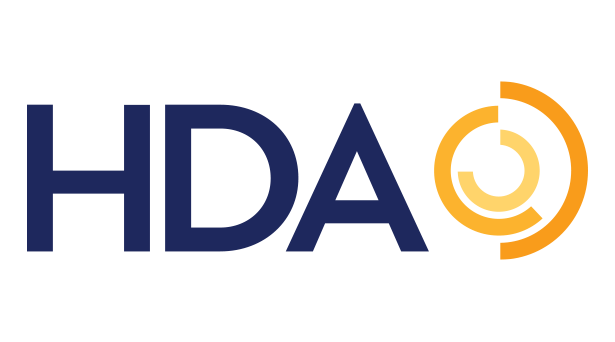Driving the Future of the Healthcare Supply Chain
The Milken Institute’s 2023 Future of Health Summit brought together policymakers, patient advocates, healthcare workers and other leading public health experts to discuss critical issues shaping the healthcare landscape, including the future of biomedical innovation, advancing health equity and the impact of climate change on public health.
As part of the event, a November 6 panel discussion entitled, “Transforming the Health-Care Supply Chain for the Future,” explored the most pressing challenges and opportunities facing the healthcare supply chain.
The conversation, moderated by Nicholas St. Fleur of STAT, featured Kirk Kaminsky, HDA Chairman and McKesson President of U.S. Pharmaceutical; John Couris, President and CEO of Tampa General Hospital; Beth Meagher, US Federal Health Sector Leader at Deloitte; and Rep. Debbie Dingell (D-Mich.).
Below are key takeaways from the discussion.
Protecting the Healthcare Supply Chain
Throughout the discussion, panelists agreed healthcare supply chain preparedness and resilience is key to ensure the availability of safe and effective medicines for patients.
Rep. Dingell highlighted the threat of antibiotic shortages during a potential public health crisis, warning “it’s a national security issue, [and] we need to be dependent upon ourselves.”
While discussing the complexity of drug shortages, Kirk Kaminsky highlighted the importance of creating redundancy within the supply chain. “[If] one manufacturer has an issue for supply… the whole market suffers,” explained Kaminsky. “So, we’ve really got to work on being multifaceted in our approach to this problem.”
How Technology Is Transforming the Supply Chain
Panelists were also unanimous in their assessment about the exciting opportunities that rapid technological advancements have created for the supply chain, while cautioning about the need to ensure effective and appropriate oversight.
“I think a critical tool that AI can help support is this concept of a digital twin. So, to be able to look at the entire supply chain and to run scenarios, look at predictability and look at where there will be hot spots so that we don’t have employee burnout. I think these are critical pieces across the board, and AI will play a role,” explained Beth Meagher. “I also think we need to acknowledge there’s a lot that we’re still learning together. How do you make it ethical? How do you look at trustworthy AI?”
John Couris echoed that sentiment, noting that while coverage of AI’s potential impact is now ubiquitous, “the question is, how scalable is it today? How practical is it to use? It’s clearly something that’s going to be here with us and will help us, but we cannot forget about the people.”
People As the Foundation of Supply Chain Resilience
Couris emphasized that strengthening supply chain resilience depends on recognizing the people behind the scenes who ensure the supply chain can continue to function.
“We cannot lose sight of the people aspect of our work… we cannot forget that we have to build resiliency in our supply chain, and that starts with people,” explained Couris. “You want to lead your people with authenticity, so you really want to spend time with your people in the supply chain and talk about the importance of being genuine in the work you do.”
Similarly, Kaminsky detailed how the coordinated COVID-19 response effort garnered appreciation for essential workers throughout the supply chain. “Healthcare workers never stopped. I know our distribution centers never missed a shift. You think about the pharmacists who were giving the vaccines and the shots and working overtime and going above and beyond… it was truly an incredible effort,” reflected Kaminsky.
Strengthening Coordination Across the Supply Chain
Panelists also discussed the need to further strengthen coordination throughout the healthcare system to build and refine a truly patient-focused approach to care delivery. Couris emphasized “when you start to look through the lens of care coordination — and you put that in the hands of the consumer and turn the consumer from passive to active, they start to drive change.”
Kaminsky spoke to how the role that healthcare distributors play provides a unique ability to analyze data to help forecast demand, noting at McKesson “We have hundreds of thousands of transactions a day, and so we have visibility upstream toward the manufacturer, but also downstream to how much product we’re dispensing out through the channel.” He added, “We have to use our intelligence — this conversation of data — how do we prepare ahead to make sure that we across the healthcare system are sharing data to know that we know exactly where we can find that product for that patient in need.”
A Multi-Pronged Approach to Health Equity
A key component to supporting health equity is access. In the face of drug supply disruptions, Kaminsky noted the importance of accessibility and ensuring equitable allocation. Existing supply must be distributed across the country, to large health systems or chain retailers and equally important, to pharmacies and care facilities that reach underserved populations.
When asked how the healthcare system can become more equitable, Meagher focused on the critical role of public-private partnerships. “On one hand, I am optimistic because there is so much innovation. On the other hand… we can all feel like there is a lot more that we need to be doing, and it’s really through these creative public-private partnerships how we unlock it,” explained Meagher.
Rep. Dingell highlighted the importance of the broader relationship between trust in public health and health equity, reiterating that “rebuilding public trust in public health is one of the most serious problems we face, not only in this country but in the world.”
The Path Forward
The discussion comes at a critical juncture for the healthcare system, and strengthening resilience moving forward will require strong collaboration across the supply chain and with government stakeholders.
The full event recording is available here. For additional HDA materials and resources, visit www.hda.org/preparedness-and-response.
